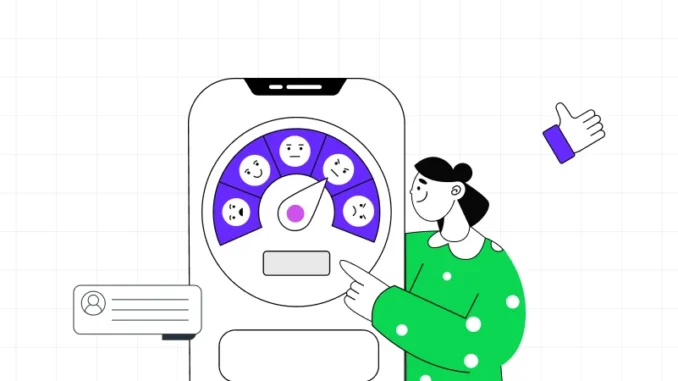
In the digital age, simply providing educational content is no longer enough to engage learners. Interactive learning formats have become a game-changer in education, offering students a more immersive and hands-on experience. These formats actively involve students in their learning process, enhancing retention, motivation, and understanding. In this post, we’ll explore how interactive learning formats can transform your educational experience and improve engagement.
1. Understanding Interactive Learning
What is Interactive Learning?
Interactive learning refers to educational methods that actively engage students through activities and content that encourage participation and collaboration. Unlike traditional, passive learning, where students only listen or read, interactive learning requires students to take an active role, often through tasks, discussions, and problem-solving.
Why It Matters
Interactive learning keeps students engaged and promotes a deeper understanding of the material. When learners interact with content, whether through quizzes, simulations, or discussions, they process information more effectively and retain it longer. This hands-on approach leads to better outcomes for learners of all ages.
2. The Power of Multimedia in Learning
Combining Text, Audio, and Visuals
Multimedia is a key component of interactive learning. By incorporating videos, podcasts, and graphics, educators can appeal to various learning styles and enhance comprehension. For example, a video demonstration can make a concept easier to understand than reading a textbook description alone. This multimedia approach keeps students engaged by presenting information in multiple formats.
Visual and Interactive Tools
Infographics, interactive diagrams, and charts are excellent tools for breaking down complex information. These visuals help learners better understand key concepts and see connections that might otherwise be difficult to grasp. Interactive diagrams allow students to manipulate the content, promoting active learning and a hands-on approach to studying.
3. Gamification: Learning Through Play
The Role of Games in Education
Gamification introduces elements of game design, such as scoring, levels, and rewards, into the learning process. By transforming lessons into games, educators can make learning more enjoyable and competitive, motivating students to participate actively. Students earn points for completing tasks, unlocking achievements, or advancing to the next level, which increases their investment in the learning process.
Benefits of Gamification
- Increased Motivation: The competitive element encourages learners to strive for better results.
- Immediate Feedback: Students receive instant feedback, allowing them to track their progress and improve quickly.
- Collaboration: Multiplayer games or group challenges foster teamwork and collaboration.
4. Simulations and Virtual Reality (VR)
Bringing Real-World Experiences into the Classroom
Simulations and virtual reality offer immersive learning experiences that replicate real-world scenarios. By using VR or simulation software, students can practice skills in a controlled environment, experiencing situations they might not have access to in traditional classrooms. This hands-on experience can be especially valuable in fields such as medicine, engineering, and architecture.
How Simulations Enhance Learning
Simulations allow students to experiment, make decisions, and see the consequences of their actions in a risk-free environment. This type of active learning helps develop problem-solving skills and deepens understanding. Virtual environments can also make abstract concepts more tangible, offering students the chance to interact with theoretical ideas in practical ways.
5. Interactive Quizzes and Polls
Engaging Students with Real-Time Assessments
Interactive quizzes and polls are an excellent way to keep students engaged and provide immediate feedback on their understanding. These assessments can be integrated throughout the lesson, encouraging students to review and apply the material as they learn. By using multiple-choice, true/false, or fill-in-the-blank questions, students can assess their own progress while actively participating in the content.
Benefits of Interactive Quizzes
- Instant Feedback: Learners receive immediate results, allowing them to recognize areas that need improvement.
- Active Participation: Instead of passively absorbing information, quizzes require students to recall and apply what they’ve learned.
- Engagement Tracking: Educators can track participation and identify students who may need additional support.
6. Collaborative Learning and Discussion Forums
Promoting Peer Interaction
Interactive learning formats encourage students to work together and share ideas. Online discussion forums, group projects, and peer-reviewed assignments provide opportunities for collaboration. Through group activities, students learn to communicate effectively, problem-solve as a team, and appreciate diverse perspectives.
Benefits of Collaborative Learning
- Deeper Understanding: Discussing and debating ideas helps solidify concepts.
- Critical Thinking: Collaboration fosters critical thinking as students analyze different viewpoints and contribute their own.
- Increased Engagement: Group work and discussions keep students engaged and prevent isolation.
7. Interactive Learning in Mobile Education
Learning on the Go
Mobile learning platforms are growing in popularity, allowing students to access interactive content from anywhere. By utilizing apps that incorporate gamification, quizzes, and multimedia content, students can learn while commuting, traveling, or during free time. Mobile learning makes education more flexible and accessible.
Benefits of Mobile Learning
- Convenience: Learn anytime, anywhere, without being tied to a computer or classroom.
- Immediate Access to Resources: With mobile platforms, students can instantly access interactive materials and assessments.
- Personalized Learning: Mobile apps can track progress and adapt content to the learner’s individual needs.
8. Tracking and Analyzing Engagement
Monitoring Student Progress
Interactive learning formats provide educators with tools to monitor student engagement and progress. Through analytics, educators can track participation in quizzes, games, discussions, and other activities. This data helps identify students who may need additional support and allows for real-time adjustments to the learning process.
Benefits of Engagement Tracking
- Data-Driven Decisions: Educators can use data to improve their teaching strategies and make informed decisions.
- Personalized Learning: By tracking student engagement, educators can tailor content to the needs and progress of individual students.
- Identifying Struggles: Early identification of disengaged students allows for timely intervention.
Conclusion
Interactive learning formats are transforming the way we engage with educational content. Whether through multimedia, gamification, simulations, or collaborative activities, these formats create more engaging and dynamic learning environments. By incorporating interactive elements, educators can foster a deeper connection to the material, enhance student motivation, and improve learning outcomes. As technology continues to evolve, so too will the opportunities to make learning more interactive and effective for all learners.



Leave a Reply